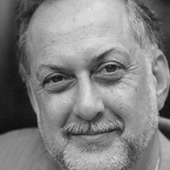
Interpretation Paul Auster's City of Glass by artists Duytter & Jef Aérosol, 2008
Organized by the Graduate Program in Urban Design at the City College of New York’s School of Architecture, Urban Design and Landscape Architecture, the annual Lewis Mumford Lecture has become an intellectual rite of spring for urbanists, architects, and students of both. The series was founded in 2004 by Michael Sorkin, the graduate program’s director, and launched with a lecture by Jane Jacobs, followed by an equally inspired roster of speakers including Enrique Peñalosa, the former mayor of Bogotá, Colombia, and David Harvey, the geographer and economic theorist. On March 12, novelist and filmmaker Paul Auster delivered the sixth Mumford lecture, reading excerpts from several novels. Before he read, Auster confessed he never understood the interest of architects in his work, but described his own long fascination with Mumford. “I first read The City in History in my early 20s,” he said. “The book was a revelation to me, offering a new perspective on just about everything. Mumford was both a deep and broad thinker, a very rare combination; a delicate writer; a passionate humanist; and a fearless articulator of his own original insights. He writes about human beings both from the outside and the inside.” It was a description that could be applied to the novelist himself. But it was Michael Sorkin’s introduction, reprinted here, that perhaps best pinpointed the liaison between literal and imaginative urbanism. — Julie Iovine, The Architect's Newpaper

Still from the film The Music of Chance, written by Paul Auster
and Belinda Haas, 1993
Paul Auster is a master of the topological novel. His remarkable popularity among architects and urbanists truly springs from the spatial preoccupations that infuse his work, a quality it shares with such cartographers as Calvino, Borges, Robbe-Grillet, Hitchcock, Chandler, Kafka, Poe, and other designers of habitats for the nearly ineffable. Each of Auster’s books provides a set of calipers, a measuring instrument for both the palpable and the metaphysical dimensions of space. That space more often than not is New York, an immense Rosetta Stone for decoding motive and meaning. Is there a more direct and compelling image of translation or a more succinct metaphor for the way cities produce meanings than the series of strolls taken by Peter Stillman in City of Glass, in which the blocks of the city become the tablet on which, letter by letter, words are spelled out for the pursuing detective, Quinn? The urban unconscious is structured as language and pattern. Space is character.
Despite the seemingly purposeful drive of these two walkers, the pervasive and much observed importance of chance and coincidence in Auster’s work also firmly links his project to the city. Cities are accident machines, generators of random encounters with people, places, objects, and self. Life as lived or constructed builds a narrative route through this collusion of unexpected and familiar events. Auster has a remarkably fine sense of the Janus of liberation and nightmare that these accidents engender. His power as a storyteller is both in constructing a singularity — one passage through time, space, and emotion — and in throwing it into radical doubt, a condition of unreliability that loops back to reveal the ultimate unknowability of the city itself. That Auster’s work so teems with allusion and filiation and with the intertextual also evokes a remarkably urban condition. The clarity of Auster’s own relationship to specific forms, incidents, and authors refracts this recombinant urbanity into colors both strange and familiar. Behind this spectral variety, there is an umbra of noir. Auster’s deep immersion in the detective novel does not simply produce a city as a set of suspicious behaviors, clues, dead-ends, and pregnant enigma; it locates it at the crumbling reaches of modernity, the limits of the rational city produced by the fragile clarities of deduction.
As with any confirmed New Yorker, Auster fills this landscape with scenes of alternative “life styles,” roadmaps to escape. In his frequent evocations of Thoreauvian isolation and self reliance — snug houses in Vermont, caves in the Western desert, concealing thickets in Central Park, imaginary countries in South America, or just cars on the road — his novels are deeply utopian and constantly threaten, as utopias will, to lapse into nightmare. Walden easily becomes the Unabomber’s hut.
Auster is brilliant at evoking our contemporary urban dystopia: lives without money, confined to single rooms; the stable balance of human relations torn apart or imprisoned by numbing regularity. He is a lapidary recorder of our anxieties, from the petty annoyances of the everyday, to insomniac nights, to the maw of loneliness, to the scary fluidity of identity, to the always lurking possibility of cataclysm.
Perhaps the reason so many Auster characters wind up in Brooklyn is the search for that elusive mental Arden that the borough seems to represent, a touchstone of the author’s fundamental optimism. Auster inhabits our city, its bars and stationers, bookshops and subways, its parks and sidewalks, its Chinese restaurants and candy stores, with a typical New Yorker’s sense that in the recursive folds of the city, the universe is embedded. And it’s a universe and a city that produces not just fear and trembling but sublime joys, the intensities of love and friendship, the pleasures of the street, the satisfactions of a cup of coffee or a good cigar — the happy accidents that are the great gifts of good city life. Auster reads the city to write it; he is one of our most creative urbanists.
This article first appeared in the April 1, 2009 issue of The Architect's Newspaper and is reprinted here with their kind permission.


Comments [3]
04.17.09
11:42
04.18.09
09:01
04.22.09
02:28